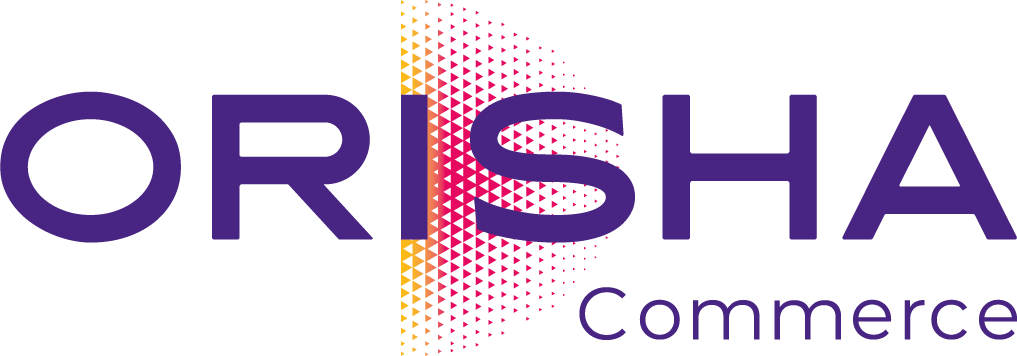Optimize product return management with customer-oriented reverse logistics software

By 2024, product returns will account for nearly 17% of annual sales, highlighting the importance of reverse logistics. Mismanagement of these return flows can increase costs, disrupt inventory, and harm the customer experience.
However, solutions like the Order Management System provide real-time management of all return operations, turning this challenge into a strategic advantage. This article will guide you in selecting the ideal reverse logistics software and deploying an agile strategy to boost performance.
The ideal software solution for reverse logistics
Essential features of reverse logistics software
Reverse logistics software transforms product return management in retail into a lever for customer satisfaction. Its primary function is to centralize product returns, allowing businesses to unify all logistics flows within a single vision.
Automation is another key aspect, including tasks such as:
- automatically generating return labels,
- notifying customers of processing stages,
- triggering internal actions
These automated workflows reduce manual management time and error risks.
The software also offers customizable rules based on product type, condition, or sales terms to optimize logistics decisions.
For instance, defective products can be automatically directed towards repair, recycling, or downgrading. Effective software optimizes merchandise by dynamically managing reverse logistics flows, anticipating the impact on product availability and the value of returned items.
The analytical dimension is just as critical, providing detailed insights into return reasons, processing times, and associated costs through real-time dashboards and indicators.
By integrating these features, reverse logistics software becomes a strategic management tool for businesses. Discover how Orisha Commerce optimizes your merchandise and inventory management, turning every product return into a performance lever.
The importance of a unified commerce model in software selection
Every product return incurs additional costs related to transportation, inventory management, and logistics processing. Adopting a unified commerce model ensures consistent and centralized management of product return logistics across all sales channels.
Software designed for unified commerce provides businesses with global, real-time visibility into product return logistics flows.
This transparency ensures precise control over merchandise flows between warehouses, stores, and digital channels, enabling teams to work on a single information base. Beyond mere coordination, native integration with other business tools optimizes inventory management within a unified environment and rationalizes costs.
By centralizing product information, companies achieve perfect control of merchandise movements.

Benefits of effective reverse logistics management
Optimize processes to improve the customer experience
Product returns, seen as a nuisance by retailers, are actually a key moment in the customer journey that can significantly influence loyalty to the business. When processes are transparent and quick, customers feel confident, reducing the frustration often associated with product return procedures.
Effective management offers simplified journeys, with flexible options such as in-store returns for online purchases or real-time tracking of each processing stage. This visibility reassures customers while limiting inquiries to the company’s after-sales service. It relies on real-time stock tracking, crucial in a unified commerce model to ensure product availability.
Implementing automation for key steps, including immediate generation of return labels and rapid validation of refunds or exchanges, accelerates logistics processing, positively perceived by customers who then see the company as reliable and responsive. Automating reverse logistics processes significantly reduces operational costs. To ensure seamless experiences for your customers, the solution must orchestrate each step, from order to product return.
Centralize information to enhance communication within the company
Optimized reverse logistics management naturally strengthens transparency within the business. With centralized product data, all teams have access to reliable information:
- Customer service can inform clients about their return status;
- Logistics can anticipate product reception;
- Merchandise management can adjust product availability promptly.
Managers can access clear indicators on return volumes, processing times, and associated costs, aiding quick decision-making.
Modern tools and technologies available
Current return management tools rely on technologies that centralize all logistics flows for companies in an omnichannel logic. The Order Management System (OMS) is one such solution, designed to optimize the order lifecycle. It integrates reverse logistics processes, offering global management of orders, deliveries, and returns across all company channels (e-commerce, physical store, warehouse).
The OMS leverages logistical automation functionalities, enabling customized management rules for each product return scenario:
- in-store return,
- reshipping,
- partial or full refund.
This solution is interoperable, allowing smooth connection with other systems: unified commerce platform, ERP, WMS, e-commerce, CRM. Predictive analyses aid in logistics and return optimization by providing the insights necessary to anticipate demand and return volumes.
Choosing the most suitable logistics solution depends on several criteria:
- Integration capacity – the tool must easily connect to existing company systems via connectors and APIs without requiring costly development;
- Scalability – the solution must accommodate increasing volumes, new channel openings, or geographic expansion; User experience – the software should offer intuitive interfaces, clear processes, and customization options to adapt to business-specific requirements.
- Customer returns, after-sales service, and unsold goods generate additional logistics flows, complicating stock and inventory management.
Without a suitable solution, these movements can quickly disrupt your supplies and impact profitability. Discover how Orisha Commerce simplifies your merchandise management!
Implementing an agile and adaptable strategy
Adapting logistics processes to the changing market needs
Product returns now play a central role in the retail ecosystem. In this context, reverse logistics must be integrated into an agile strategy capable of responding to demand fluctuations and new regulatory constraints. To tackle these challenges, businesses need to rely on flexible tools. During peak periods like sales or promotions, product return management must adapt without compromising timeliness or service quality.
Meanwhile, the rise of ReCommerce is permanently shaping market expectations. With projected growth of 55% by 2029, companies must integrate logistics solutions that valorize returned products through refurbishment, giving them a second life, or reallocating them to secondary channels. The ReCommerce approach also helps reduce waste by promoting the reuse of raw materials in product recycling or refurbishment.
Giving products a second life creates new revenue streams and reduces companies’ environmental footprint. To support this evolution, Orisha Commerce offers dedicated ReCommerce solutions, seamlessly integrating these new models into your omnichannel strategy. Discover how to extend your products’ life with our ReCommerce solution!
Ensuring smooth interaction among all logistics chain actors
Ensuring smooth interaction primarily depends on transparent information flow within the company. Every participant (internal teams, partners like transporters, warehouse) must access product data in real-time to coordinate their actions effectively. The key lies in system integration via a centralized platform capable of connecting all logistics chain links to ensure unified stock. Interaction fluidity also relies on process standardization and clear definition of roles.
Historically seen as a logistical burden, product return management is now recognized as a strategic lever for retail businesses. By integrating advanced reverse logistics solutions, companies can streamline their processes and enhance the customer experience. Orisha Commerce facilitates this transformation by offering integrated solutions that centralize merchandise management, including orders, inventory, returns, and stock control. Discover how Orisha Commerce helps you maximize the benefits of reverse logistics.
Frequently asked questions
What is the definition of reverse logistics?
Reverse logistics encompasses all the steps required to manage product returns. Unlike traditional logistics, which focuses on delivering goods to consumers, reverse logistics handles reverse flows: customer returns, defective products, recycling, or refurbishment. Properly managed, reverse logistics helps reduce costs and valorize returned products. It requires tools capable of centralizing information and streamlining coordination among warehouses, transporters, and internal teams. Effective reverse logistics management also includes responsible practices like recycling or reallocating products to secondary channels. To optimize reverse logistics, businesses need flexible solutions. Real-time visibility into logistical flows is crucial for anticipating the impact of product returns on the supply chain. A proficient reverse logistics strategy enhances customer satisfaction by offering simple and quick return processes.
How to optimize product return management in e-commerce?
Optimizing product return management in e-commerce involves centralizing logistical flows through an appropriate solution, automating key steps such as label creation, notifications, and refunds, and ensuring real-time visibility for all teams. A clear return policy combined with seamless integration of company channels (marketplace, point of sale, warehouse) enables a frictionless customer experience. Coordination among warehouses, transportation partners, and internal teams is essential for smooth product returns.
Which tools can help manage reverse logistics?
The most effective tools for managing reverse logistics are Order Management Systems (OMS), which centralize order and product return management across all company channels. They integrate with Warehouse Management Systems (WMS) to optimize processing in warehouses, and also with ERP and CRM to ensure coherence between logistics, financial management, and customer relationship management. Automation and data analysis solutions complement this ecosystem, enhancing visibility and decision-making.
What are the strategic challenges of reverse logistics for businesses?
The main challenges of reverse logistics include reducing operational costs, often increased by ineffective product return management, and optimizing merchandise to minimize immobilization or devaluation. By limiting unnecessary movements, reverse logistics directly reduces transportation expenses. It also plays a crucial role in improving the customer experience by offering simple and quick return processes. Additionally, reverse logistics must meet environmental requirements by promoting recycling, refurbishment, and responsible management of returned products. Each return represents an opportunity to extend a product’s life through repair or recycling.
How to implement a reverse logistics strategy?
Implementing a reverse logistics strategy involves defining clear and standardized processes for each type of product return, considering product specifics and company sales channels. Integrating a centralized tool like an OMS is crucial for ensuring visibility and automation of logistical flows. Close collaboration with logistics partners and adopting a transparent product return policy for customers is also essential. Regular performance monitoring through key indicators helps to adjust the reverse logistics strategy to optimize costs, timelines, and reduce environmental impact.
What are the key steps in the reverse logistics process?
The key steps in the reverse logistics process begin with initiating the product return, where the customer submits their request via a defined sales channel (online sales, in-store sales, customer service). This is followed by validation and authorization of the return, with necessary documents generated. Next is the collection and transport of products to the warehouse. Upon reception, the product undergoes a control and sorting phase to determine if it should be refurbished, recycled, or downgraded. Finally, the reverse logistics process concludes with a refund or exchange and updating systems to ensure traceability and analysis of product returns.
What types of products are generally concerned with reverse logistics?
Reverse logistics generally concerns defective products, items damaged during transportation, or products that do not meet customer expectations. It also includes seasonal or perishable products that need to be returned after a specific period. Companies must be prepared to manage a variety of scenarios to maximize value recovery and limit logistical costs.




